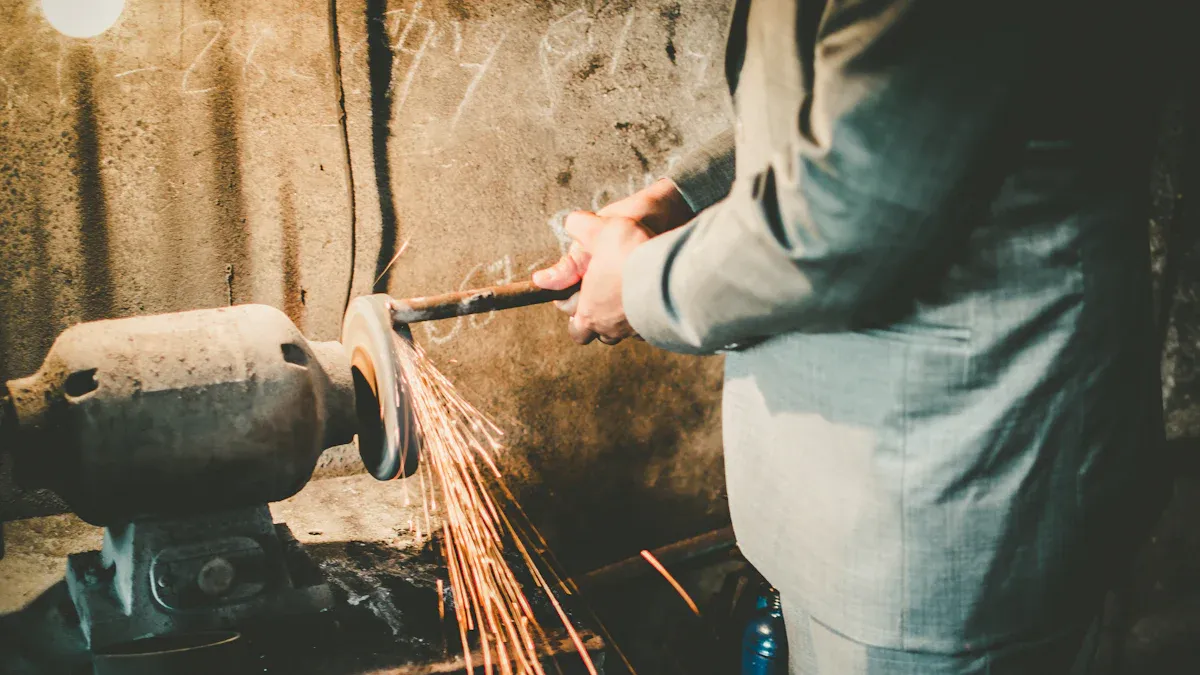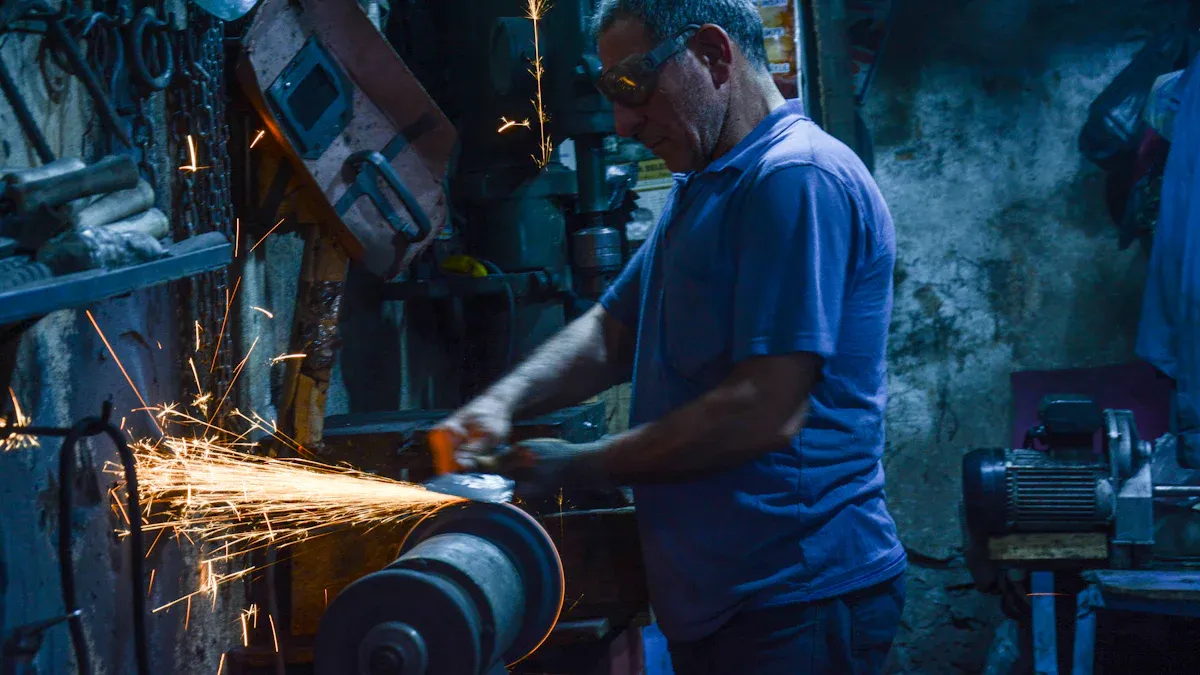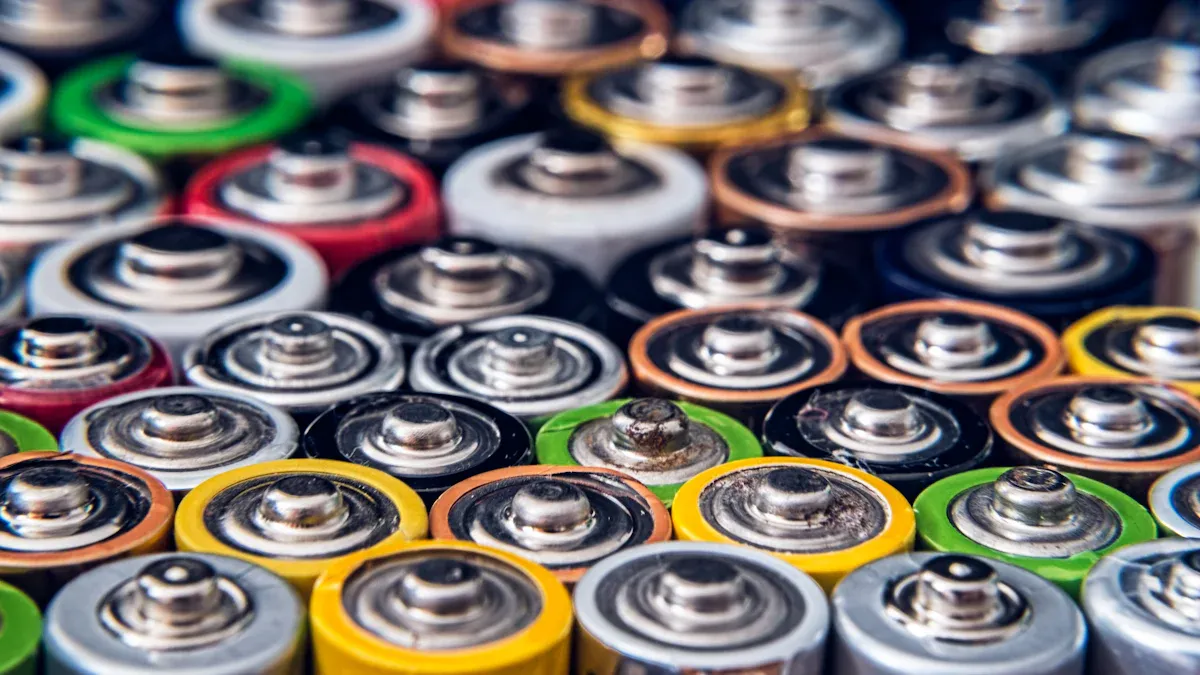How Wet Grinding Enhances Lithium Battery Material Efficiency

Wet grinding is crucial for enhancing lithium battery wet grinding performance. It breaks materials into tiny pieces, increasing their surface area, which allows the materials to react more effectively and operate more efficiently. Wet grinding ensures that active materials are distributed evenly, thereby improving energy storage and flow. Additionally, it produces particles of uniform size, contributing to consistent battery performance. Due to these advantages, wet grinding is an essential step in the production of high-quality lithium-ion batteries.
Key Takeaways
Wet grinding makes materials have more surface area, boosting battery power.
Tiny, same-sized particles from wet grinding store energy better and conduct electricity well.
Wet grinding cuts down waste, making production faster and better for the environment.
Special machines like Wet Batch Mills SX Series grind better and keep particle sizes steady.
Wet grinding helps batteries last longer by lowering flaws and wearing materials evenly.
Benefits of Lithium Battery Wet Grinding

Better Particle Size for Improved Reactivity
Wet grinding helps make particles smaller and more even. Smaller particles have more surface area, which helps chemical reactions happen faster. This makes the battery work better because active materials and electrolytes mix more easily.
Studies show how particle size affects performance. For example, uneven cathode particles can improve capacity and ionic movement. The table below shows how particle size impacts battery performance:
Performance Metric | Effect of Particle Size Distribution |
|---|---|
Capacity | |
Specific Energy | Higher with varied cathode particle sizes |
Overpotential | Lower due to more surface area |
Ionic Transport | Improved with more space between particles |
This proves wet grinding is key to better particle size and reactivity.
Higher Energy and Conductivity
Wet grinding also improves energy storage and conductivity in batteries. It spreads materials like graphite evenly, making it easier for electrons and ions to move. This improves how well the battery charges and discharges.
When comparing wet and dry grinding, wet grinding performs better. Wet-milled materials have higher conductivity and discharge capacity. The table below compares the two methods:
Metric | Wet-Milled (Xylene) | Dry-Milled |
|---|---|---|
Ionic Conductivity (S·cm−1) | 1.0–1.9 | 2.8 |
Electronic Conductivity | Much higher | Lower |
Discharge Capacity (mAh·g−1) | Lower | |
Coulombic Efficiency (%) | 81.3 | Lower |
These results show why wet grinding is better for battery performance.
Longer Battery Life and Stability
Wet grinding not only helps batteries work better now but also keeps them working longer. It reduces defects in materials like graphite, which stops them from breaking down over time. This helps batteries last through many charges and discharges.
Evenly ground materials also wear out more evenly. This makes batteries last longer and work more reliably. For industries needing strong batteries, this is a big advantage.
Less Waste and Better Efficiency
Using materials wisely is important for making good lithium-ion batteries. Wet grinding helps cut down waste during production. It breaks materials like graphite into same-sized pieces. This makes sure all the material is used in the battery, leaving little waste.
Wet grinding also spreads graphite particles evenly. Evenly spread particles stop clumps and mix better. This means all the graphite is used, making production more efficient.
Tip: Machines like the Wet Batch Mills SX Series can improve efficiency. Its pump system grinds evenly, cutting waste and improving product quality.
Wet grinding also makes production easier. Dry grinding needs extra steps to make materials even. Wet grinding skips these steps. You can add graphite directly to the grinder, saving time and reducing material loss.
Wet grinding is also better for the environment. It creates less waste, so fewer raw materials are needed. This lowers the environmental harm of making batteries. For eco-friendly industries, this is a big plus.
The Wet Grinding Process for Lithium Battery Materials
Overview of Wet Grinding Techniques
Wet grinding breaks materials into smaller pieces using liquid. This helps lithium-ion batteries work better by improving material properties like graphite. It creates smaller particles and spreads them evenly, which boosts energy storage and conductivity. Wet grinding is different from dry grinding because it lets you control things like heat and thickness for better results.
The process has several steps. First, materials are made smaller while keeping their quality. Then, mixing and coating spread active materials evenly. Next, wet mixing adjusts things like thickness and material blend. Finally, machines control energy and heat for precise grinding. The table below explains these steps:
Process Step | Description |
|---|---|
Particle Size Reduction | Keeps materials like graphite intact while reducing size. |
Mixing and Coating | Uses tools like stirrers and mills to mix evenly. |
Wet Mixing of Slurries | Adjusts material blend and thickness for better results. |
Process Control | Machines like RETSCH mills manage energy, time, and heat during grinding. |
Equipment Used in Lithium Battery Wet Grinding (e.g., Wet Batch Mills SX Series)
Good equipment is important for wet grinding lithium battery materials. The Wet Batch Mills SX Series by Wuxi Taixian Powder Technology Co., Ltd. is a great option. It grinds materials like graphite quickly and evenly using fast-moving beads.
One helpful feature is its circulation pump system. This system makes grinding more efficient and keeps particle sizes consistent. The machine is easy to use, which saves time and reduces repairs. Models range from small to large sizes, fitting different production needs. Its compact design works in many spaces without needing special setups.
Key Parameters Influencing the Process
Several things affect how well wet grinding works for batteries. Controlling heat is very important. Too much heat can damage materials, while too little slows grinding. Thickness also matters. Keeping the right thickness helps mix and coat materials evenly.
Energy levels are another key factor. Machines like the SX Series let you adjust energy for better grinding. Time is also important. Grinding longer makes smaller particles, but too much grinding can harm materials. Watching these factors helps make high-quality battery materials efficiently.
Challenges in Lithium Battery Wet Grinding
Managing Energy Use and Efficiency
Energy use is very important in wet grinding. The process must save energy while staying efficient. Machines like basket mills use special grinding methods. These methods keep bead loading at 75% or higher. This saves energy and makes grinding faster. Smaller particles are made quickly, which saves production time.
The table below shows key points about energy use and efficiency:
Aspect | Details |
|---|---|
Energy Efficiency | Basket mills use high-energy grinding to keep bead loading at 75% or more. |
Energy Use Reduction | The design avoids motor overload, cutting energy costs. |
Faster Production | Quick particle size reduction shortens production time. |
Less Material Waste | Controlled grinding reduces material loss. |
By managing these points, you can save energy and improve results.
Preventing Contamination During Grinding
Contamination can ruin materials like graphite during grinding. Steps must be taken to keep the process clean. Using sealed machines helps stop impurities from entering. Machines like the Wet Batch Mills SX Series have protective air systems. These systems keep the grinding area clean. Cleaning and maintaining machines also help keep materials pure.
When contamination is avoided, the final product works better and lasts longer. This is very important for industries needing strong lithium-ion batteries.
Balancing Costs and Benefits
Balancing costs with results is a challenge in wet grinding. Good machines and new technology can cost a lot. But they often save money in the long run. Efficient systems waste less material and use less energy, lowering costs over time.
You should compare the upfront cost with future savings. Machines like the SX Series are both efficient and cost-effective. By focusing on better performance, you can make the cost worth it and improve production.
Innovations in Wet Grinding Technology

New Equipment Designs (e.g., Circulation Pump Systems)
Modern wet grinding machines are now more efficient and precise. A key improvement is the use of circulation pump systems. These pumps help spread materials, like graphite, evenly during grinding. They stop clumps from forming and create same-sized particles. This improves material quality for better lithium battery parts.
Circulation pumps also save energy. They keep materials moving, cutting grinding time. This reduces energy use and lowers material waste. These systems work for both small and large production needs. Their strong and compact design makes them easy to set up anywhere.
Nanotechnology for Tiny Particles
Nanotechnology has changed wet grinding by making super small particles. This is important for lithium batteries because smaller particles work better. For example, nanosized manganese cathodes can store more energy, up to 200 mAh/g. Scientists use tools like electron microscopes and X-rays to study these tiny structures.
Evidence Description | Findings | Methodologies |
|---|---|---|
Nanosized microstructure in manganese-based cathodes | Better electrochemical properties with 200 mAh/g capacity | Advanced electron microscopy and X-ray techniques |
Nanotechnology helps spread particles evenly, improving conductivity and stability. This makes lithium batteries last longer and work more efficiently.
Automation and AI for Better Processes
Automation and AI are making wet grinding smarter. Machines now adjust settings like temperature and pressure automatically. This keeps grinding consistent and reduces mistakes. The final product is better because of these adjustments.
AI also studies past grinding data to fix problems before they happen. It helps save energy and cuts downtime. This lowers costs and makes the process eco-friendly. With automation and AI, wet grinding becomes faster, more accurate, and reliable.
About Wuxi Taixian Powder Technology Co., Ltd.
Wuxi Taixian Powder Technology Co., Ltd. is a top company in advanced grinding. They create smart machines for industries like energy, ceramics, and medicine. If you need reliable grinding tools, they have modern solutions just for you.
Did you know? Wuxi Taixian makes wet grinding systems that boost lithium battery materials. Their machines create smaller particles, spread materials evenly, and improve efficiency.
Their best product, the Wet Batch Mills SX Series, changes how wet grinding works. It offers:
Versatility: Works for many industries, including lithium battery making.
Efficiency: Circulation pumps ensure even grinding and less waste.
Scalability: Comes in sizes from 4 liters to 1000 liters.
Wuxi Taixian designs machines that are easy to use and save energy. Their tools are compact, simple to maintain, and lower costs while giving great results.
The company’s focus on new ideas keeps them ahead. They use nanotechnology and automation to improve wet grinding. Their machines make production faster and help create better lithium-ion batteries.
To stay competitive in the battery world, trust Wuxi Taixian Powder Technology Co., Ltd. for advanced grinding tools.
Wet grinding is important for making lithium-ion batteries work better. It improves materials, helping them store energy and conduct electricity well. This process creates smaller particles and spreads them evenly, which is key for top-quality batteries.
Key Takeaway: New tools and AI are fixing problems like energy waste and contamination.
As people need better batteries, wet grinding will stay essential. Using modern technology helps you stay competitive in the battery market.
FAQ
What is wet grinding, and why is it important for lithium batteries?
Wet grinding breaks materials into tiny pieces using liquid. It helps batteries by making smaller particles, storing energy better, and improving conductivity.
How does wet grinding differ from dry grinding?
Wet grinding uses liquid to make particles smaller and spread evenly. Dry grinding doesn’t use liquid, which can cause uneven sizes and damage materials.
What equipment is best for wet grinding lithium battery materials?
The Wet Batch Mills SX Series by Wuxi Taixian Powder Technology Co., Ltd. works great. Its pump system grinds efficiently, makes even particles, and reduces waste.
Can wet grinding improve battery lifespan?
Yes! Wet grinding makes even particles, lowering defects in materials. This helps batteries last longer and work well through many charges.
Is wet grinding eco-friendly?
Yes! Wet grinding reduces waste and uses resources wisely. It also skips extra steps, making it a greener way to produce batteries.
Tip: Use advanced machines like the SX Series for better results and sustainability.